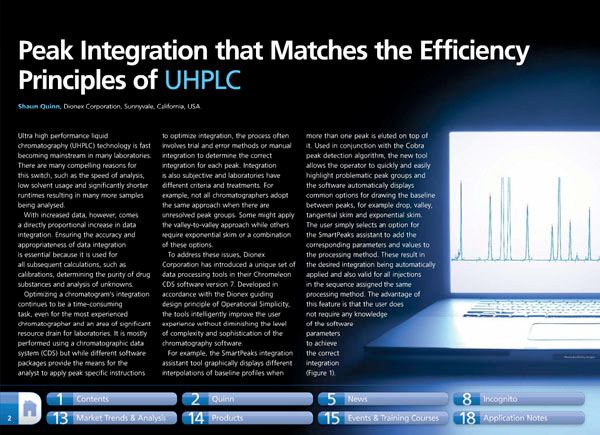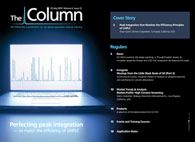Peak Integration that Matches the Efficiency Principles of UHPLC
UHPLC is fast becoming mainstream in many laboratories. With increased data, however, comes a directly proportional increase in data integration.
Ultra high performance liquid chromatography (UHPLC) technology is fast becoming mainstream in many laboratories. There are many compelling reasons for this switch, such as the speed of analysis, low solvent usage and significantly shorter runtimes resulting in many more samples being analysed.
With increased data, however, comes a directly proportional increase in data integration. Ensuring the accuracy and appropriateness of data integration is essential because it is used for all subsequent calculations, such as calibrations, determining the purity of drug substances and analysis of unknowns.
Optimizing a chromatogram’s integration continues to be a time-consuming task, even for the most experienced chromatographer and an area of significant resource drain for laboratories. It is mostly performed using a chromatographic data system (CDS) but while different software packages provide the means for the analyst to apply peak specific instructions to optimize integration, the process often involves trial and error methods or manual integration to determine the correct integration for each peak. Integration is also subjective and laboratories have different criteria and treatments. For example, not all chromatographers adopt the same approach when there are unresolved peak groups. Some might apply the valley-to-valley approach while others require exponential skim or a combination of these options.
New Method Explored for the Detection of CECs in Crops Irrigated with Contaminated Water
April 30th 2025This new study presents a validated QuEChERS–LC-MS/MS method for detecting eight persistent, mobile, and toxic substances in escarole, tomatoes, and tomato leaves irrigated with contaminated water.
University of Tasmania Researchers Explore Haloacetic Acid Determiniation in Water with capLC–MS
April 29th 2025Haloacetic acid detection has become important when analyzing drinking and swimming pool water. University of Tasmania researchers have begun applying capillary liquid chromatography as a means of detecting these substances.
Prioritizing Non-Target Screening in LC–HRMS Environmental Sample Analysis
April 28th 2025When analyzing samples using liquid chromatography–high-resolution mass spectrometry, there are various ways the processes can be improved. Researchers created new methods for prioritizing these strategies.

.png&w=3840&q=75)

.png&w=3840&q=75)



.png&w=3840&q=75)



.png&w=3840&q=75)














